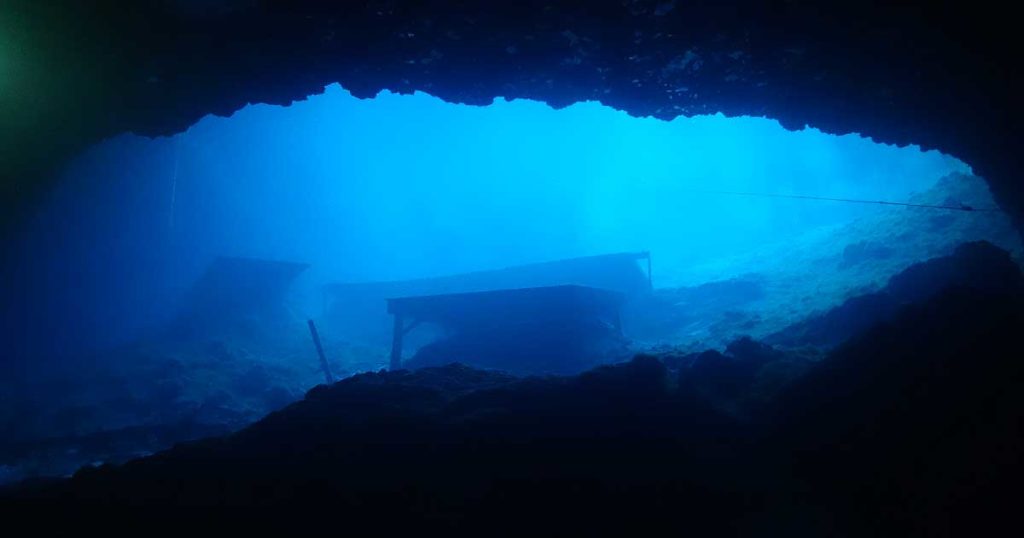If you dive at Blue Grotto — or any other Florida spring for that matter — the risks and hazards of overhead environment diving are something you need to be aware of.
What makes diving so safe
Aside from a heart attack or stroke, the worst thing that can happen to a diver is running out of air. But, as you learned in your beginning course, were that to happen, you can still reach the surface just by making a continuous noise while ascending. This will allow expanding air in your lungs to vent, reducing the risk of a lung overpressure injury.
The catch is, this only works if there is nothing preventing you from making a direct ascent to the surface. If there is any sort of barrier between you and the surface, you lose this important safety factor. This is what is called being in an overhead environment. Examples include:
- Being under ice.
- Penetrating a wreck or other manmade structure.
- Diving in a cavern or cave.
Blue Grotto never freezes over and we have no underwater wrecks. What our divers must concern themselves with are the risks of diving in caverns and caves.
The difference between caverns and caves
What is the difference between a cavern and a cave?
- A cavern is defined as any natural overhead environment in which divers can see the entrance clearly and are never more than 60 m/200 ft from breathable air. The upper portion of Blue Grotto meets this definition.
- Once you leave sight of the entrance, you are no longer in a cavern. You are in a cave. And cave diving requires highly specialized training and equipment. Period. No exceptions.
Four ways to cavern diving safely
There are four ways in which divers can explore underwater caverns with a high degree of safety. These are:
- Become a certified Cavern Diver: This is arguably the best way as it will equip you with all the knowledge and skills needed to cavern dive safely. Your Cavern Diver card will give you access to caverns not normally open to sport divers, such as those at state parks.
- Follow the ‘no lights’ rule: If you don’t take a light with you, you are unlikely to go anywhere you could get in trouble.
- Dive with a Cavern Instructor: You can dive in caverns normally open only to certified Cavern Divers by making a guided dive with a qualified Cavern Instructor. This is popular in Mexico but also happens here in state parks and other sites.
- Limit your cavern dives to certain sites: There are a handful of cavern sites in north-central Florida considered acceptable for any certified diver. These sites include Ginnie Spring, Devil’s Den, Paradise Spring and, of course, Blue Grotto. This is largely due to the fact none of these sites lead to a maze of underwater cave passageways in which divers could easily become lost.
The upper chamber of the Grotto actually meets two of these criteria. It is not only widely considered acceptable for any certified diver, it also falls within the no-lights zone.
The caveat
Just bear in mind that when you enter the cavern at Blue Grotto, you lose the ability to make an Emergency Swimming Ascent. This is why it is vital to always dive with a competent and attentive buddy who can donate air when needed. Solo diving in this sort of environment is out of the question.
Questions?
We are always happy to answer them.


